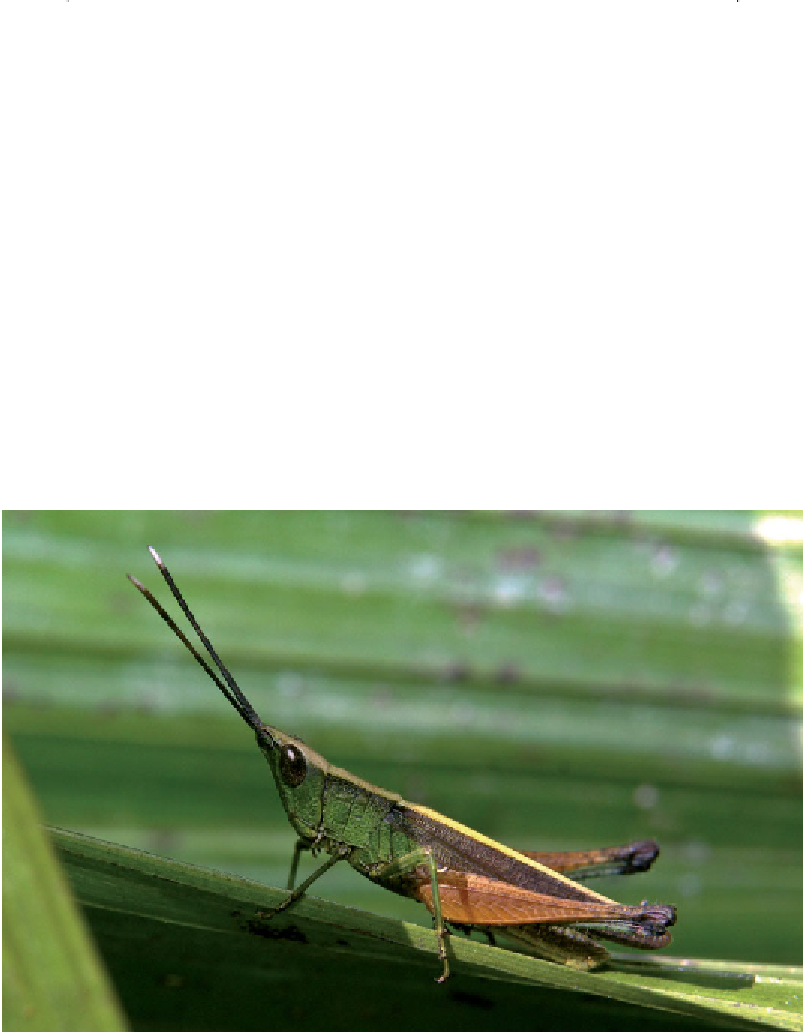Travel Reference
In-Depth Information
Meanwhile, the original cluster of trees grows old and dies. Its pathogens
also die, or migrate to new clusters. And now the area where the trees and
their pathogens used to live is freed up to host a new cluster.
Mathematical ecologists who followed up on Janzen and Connell's origi-
nal idea pointed out that such a dynamic system could maintain many spe-
cies of tree simultaneously, with each tree of a species at an advantage when
it is rare in a pathogen-free part of the forest, and at a disadvantage when it is
part of a cluster that attracts pathogens and herbivores.
This dynamic process resembles a phenomenon called frequency-depen-
dent selection, which has often been found to be acting on genes within pop-
ulations. An allelic form of a gene may be at an advantage when it is rare,
but at a disadvantage when it is common. Such alleles will spread in popula-
tions, until they reach an equilibrium point at which the advantage of rarity
is counterbalanced by the disadvantage of commonness.
Figure 78
Grasshoppers are everywhere in the forests and do much damage to leaves
and stems. I spotted this striking Acridid grasshopper in Gunung Gading National Park, near
Kuching in Sarawak.


